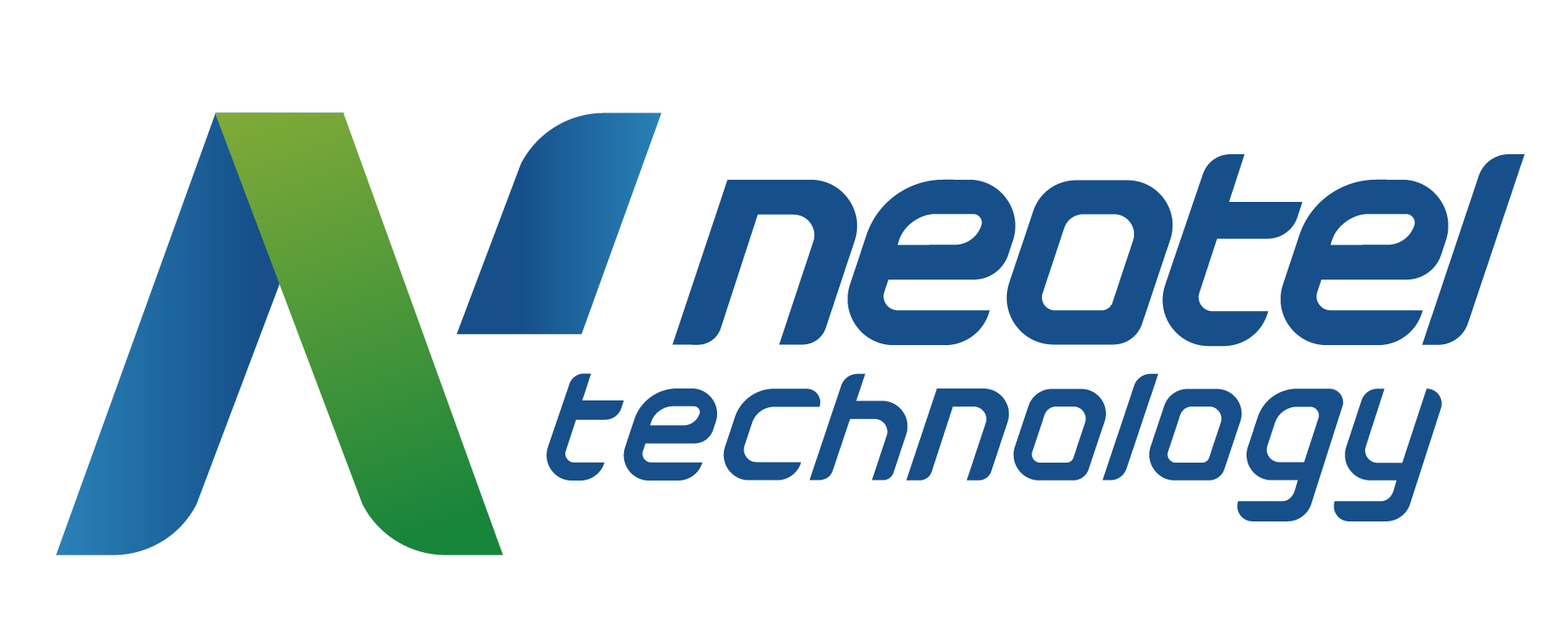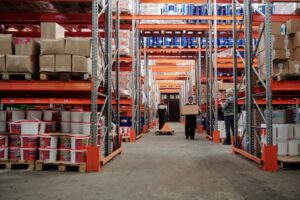Welcome to the wonderful world of the Industrial Internet of Things! Explore the difference between the IoT and the IIoT, how the IIoT actually works, the specific impact of the manufacturing sector, and then implementations, challenges, and forecasts for the Industrial Internet of Things at large.
What is the Industrial Internet of Things?
When the technology for the Internet of Things first became accessible, people and businesses everywhere rushed to install internet-connected devices in small consumer spaces and for personal use. The Industrial Internet of Things is a larger application of IoT technology most commonly applied by the transportation, medical, retail, and manufacturing industries. It goes beyond consumer spaces, reaching into the supply and distribution chains of more industrial markets.
Just a few of the many benefits of the Industrial Internet of Things include higher levels of industrial automation, a broader operational efficiency, and a reduction in downtime, quality errors, and safety infractions. The IIoT also allows businesses to analyze their scalability through predictive analytics and identify new revenue streams. All in all, the IIoT has revolutionized manufacturing.
KEY TAKEAWAYS
IIoT = Aggregated data from automated, connected IoT devices
IIoT = Operational Technology + Informational Technology
IIoT = Industrial Control System + Cloud computing
The Industrial Internet of Things is made of automated sensors and processing equipment, but it is also much more than that. The IIoT framework allows for the collection and analysis of key data from electronic equipment across the span of the whole production process. Ultimately, the Industrial Internet of Things connects the people, devices, and software applications into a fully integrated business ecosystem.
How is the IIoT Different from the IoT?
The Internet of Things (IoT) refers to the idea that the Internet is composed of many interconnected devices that constantly send signals to each other. But what can these signals do when they communicate?
Here’s where we turn to innovation, including the Industrial Internet of Things, or IIoT. At first glance, these terms seem pretty interchangeable, but understanding the difference between them will put you leagues ahead in your business as you capitalize on these new upgrades to the IoT.
The biggest difference between IoT and IIoT is that the former is made up of devices you can touch. The latter is made up of devices that you can touch, but that you rarely need to, as they respond to their own internal algorithms and data collection.
The Internet of Things focuses on connecting individual devices to networks to help automate certain processes.
An example would be sensors turning on overhead lights or adjusting a room’s temperature throughout the day.
The goals of the Industrial Internet of Things on manufacturing systems are twofold:
Increase local collaboration between automated devices
Increase system optimization within global market trends
An industrial example would be a temperature sensor in a piece of operational equipment that traces temperature changes and predicts system wear and maintenance throughout the production cycle.
The IoT and the IIoT are very similar, except that the Industrial Internet of Things has a much larger scope. This is because full integration of IoT devices expands the opportunities for businesses to optimize their entire systems by strengthening their technological architecture.
How Does the Industrial Internet of Things Actually Work?
The Industrial Internet of Things is a combination of Information Technologies and Operational Technologies. This intersection allows for greater human implementation of equipment and technology.
The Industrial Internet of Things = Operational Technology + Informational Technology
In short, IIoT = OT + IT
Information Technologies are present in the use of computers, networks, and other systems and hardware that can store and process electronic data. It is a broad category because it encompasses all non-physical data systems and back-end architecture.
IT mostly refers to abstract systems, like organized data warehouses or internet accessibility.
Operational Technologies are the systems of software and hardware that control and monitor the industrial equipment at work. OT mostly refers to physical systems, like industrial equipment and machine hardware.
The Industrial Internet of Things gets its data from automated sensors and processors, and then the data is synthesized further using techniques like M2M (machine-to-machine), AI (artificial intelligence), and big data.
The combination of Informational and Operational Technologies, functional due to data processing such as AI and M2M, allows for more integrated, cohesive, enterprise systems that can help businesses better manage their own efficiency as well as keep up pace with supply chains.
The Industrial Internet of Things in Manufacturing
The Industrial Internet of Things is also the integration of Cloud computing to a manufacturer’s Industrial Control System, or ICS. An Industrial Control System is simply all of the hardware (and some software) that is installed and operates on some level of the production line. An ICS is included in what we call Operational Technology. It includes some things you may have heard before like PLCs (programmable logic controllers) and SCADA (supervisory control and data acquisition) systems.
So, we have another helpful definition of the Industrial Internet of Things: IIoT = ICS + Cloud computing
Cloud computing is one of the easiest and most popular ways of breaking up and re-organizing old data silos. It includes a form of data architecture called edge computing, which works by grouping large datasets close to the “edges” of a network so that analysis can be more easily and quickly completed in segments. This is a huge cost-saver when it comes to implementing IIoT technology in a business with many moving parts.
Analytic Purposes of IIoT
There are many specific analytic applications for the IIoT depending on what your business strategy is, so it can be helpful to categorize types of analysis into a few broad groups to conceptualize the big picture:
Descriptive Analytics: monitoring data for insight on reporting, trends, training, detection and diagnosis, etc.
i.e. Optimizing equipment usage and reporting
Predictive Analytics: statistical and machine learning techniques, consumption and wear & tear predictions
i.e. Optimizing system maintenance and performance
Prescriptive Analytics: identifying and optimizing best practices in new sectors or market gaps
i.e. Optimizing business’ market niche and scalability
Industrial Internet of Things Challenges
The biggest concerns of the Industrial Internet of Things are privacy and security. Because data is being stored on the internet via Cloud computing, it is vulnerable to cyber attacks. Researchers in the field have identified access management, secure data encryption and gateways, sensor authentication, and software authorizations as potential weak spots for security breaches.
Especially with edge computing, building more electronic information pathways strengthens your data processing, but also opens up new areas for a potential breach.
With all of this concern about cybersecurity, it is prudent to use an enterprise resource planning system that can help configure each aspect of your business into the industrial sphere with a privacy-first, cyber-aware perspective.
Another, growing concern of the IIoT is the interoperability of IoT devices. Interoperability refers to the ability of different devices to send data and communicate with each other automatically. Because a lot of IoT devices use different software and metrics, you need to build stable connections between devices so that the system can run by itself. Imagine a consumer IoT home, which has a Google Home, an Apple Smart TV, and some automated kitchen appliances. They might just have a little trouble setting up all those devices under the same command system, seeing as they have different manufacturers and patented tech. Now imagine that level of local collaboration between a hundred devices in a factory setting: without a standardizing command system, it would be chaos!
As more technology is discovered, more complicated IoT devices and also IIoT data processing will be available. For up-to-date businesses riding the wave of IIoT innovation, keeping up with the technology will be difficult but not impossible, as proper IIoT architecture keeps scalability and interoperability in mind.
IIoT Technology of the Future
Most of the Industrial Internet of Things technology we can identify today is very new in the scheme of the things, and may rapidly change with developments in research. For example, while most commonly people use some version of the Cloud for data storage, the 5G cellular broadband network is starting to be implemented more into businesses’ IIoT architecture.
The Industrial IoT Consortium (a group of global businesses invested in the development of the IIoT) created the Industrial Internet Reference Architecture standards in order to introduce SOPs for all businesses trying to implement IIoT systems.
The system they came up with to describe a fully integrated IIoT framework is thorough, but easy enough to understand at a glance:
Control: sensing, communication, execution, motion, and actuation;
Operations: provisioning, management, monitoring, diagnostics and optimization;
Information: data fusion, transforming, persisting, modeling and analyzing;
Application: logic, rules, integration, human interface; and
Business: enterprise and human resources, customer relationships, assets, service lifecycle, billing and payment, work planning and scheduling.
From the bottom up, every aspect of the business operations is connected to the IIoT system, from the most simple sensors on equipment all the way up to business strategy for new revenue streams identified by data analysis. This is what is called an “end-to-end” IIoT system, and it is the eventual goal of anyone adopting any form of IIoT technology.
There’s one thing we know for sure: the Internet of Things is constantly growing and being further industrialized for maximum efficiency and reach. So hop on to this business trend while you’re ahead, and starting Industrializing your Things!


